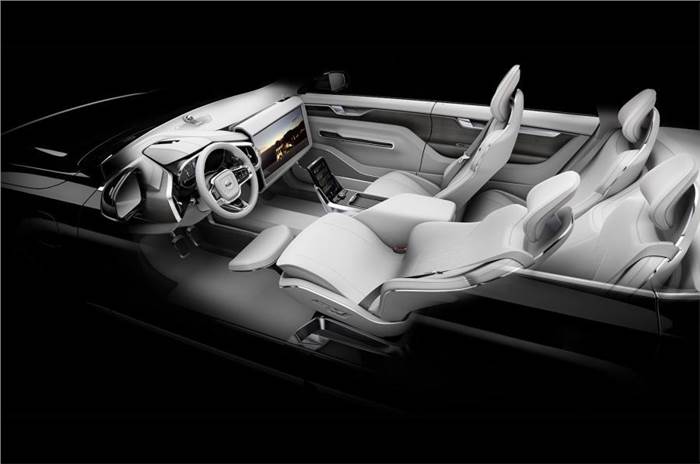Volvo design bosses believe that the company’s passenger focused interior layout makes it well-placed to be a world leader in autonomous car cabin design. Speaking to our sister publication Autocar UK, Thomas Ingenlath, Volvo’s senior vice president of design, explained that while European rivals have focused on driver-centric cabins, Volvo has long prioritised overall passenger comfort.
“Not being a company that has a passion for power and driver focus means that we have spent more time exploring the passenger lounge area,” he said. “In the S90 Excellence [a three-seater model for China], we used a special centre console and took a seat out to explore what you could actually do with this space.”
Volvo has been conducting studies to better understand how to maximise well-being for all passengers for many years, and coincidentally, this knowledge is now relevant for autonomous car design. “Now we see all these exercises have become elements in a big puddle and we were naturally researching in this area,” Ingenlath continued. “It shows that our way of looking into a car has naturally turned into how you use a car in the future.”
Robin Page, vice president of interior design at Volvo, said that the company’s global approach to design, with its three design studios located in Sweden, America and China, would help it to better adapt future models to local markets.
“We have a studio in California, and it’s noticed that Los Angeles as a car market is a driver for electronic development. China is more about rear passengers and luxury, while Europe is a bit special as it still focuses on the driver,” he explained.
Page said that while all these markets had slightly different demands for cars, electrification, autonomous technology and connectivity were the three most common shared focus areas. “The tough part from our point [to meet these demands] is we have to add more feature content, entertainment and things that can entertain and put [passengers] into different situations when they’re not driving the cars,” said Page.
He added that seats would, therefore, become an increasingly important part of cabin design. Page also referenced the Volvo Concept 26’s cabin, which experimented with adjustable seats that allowed the driver to lie down, offering a glimpse of the carmaker’s future interior design.
“C26 was certainly not like a far into the future dream,” added Ingenlath. “It was something that explored the type of cabin in our next generation of cars. Will we see all the features in them? No. But we will see some of them? Yes.”




Comments
Member Login
Personal Details
No comments yet. Be the first to comment.